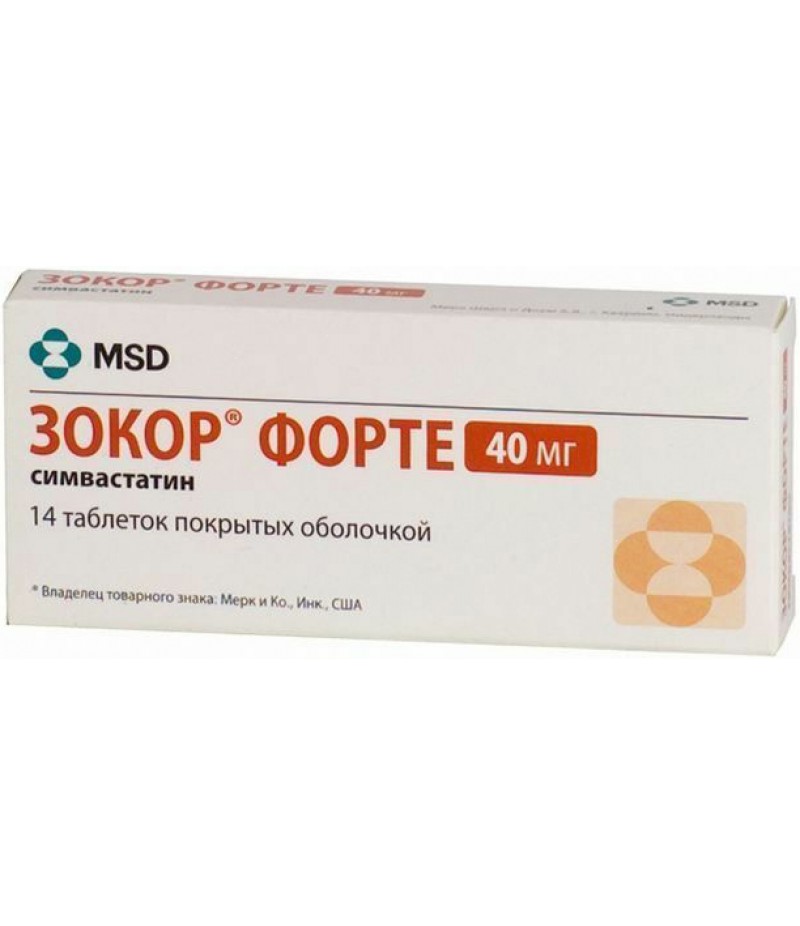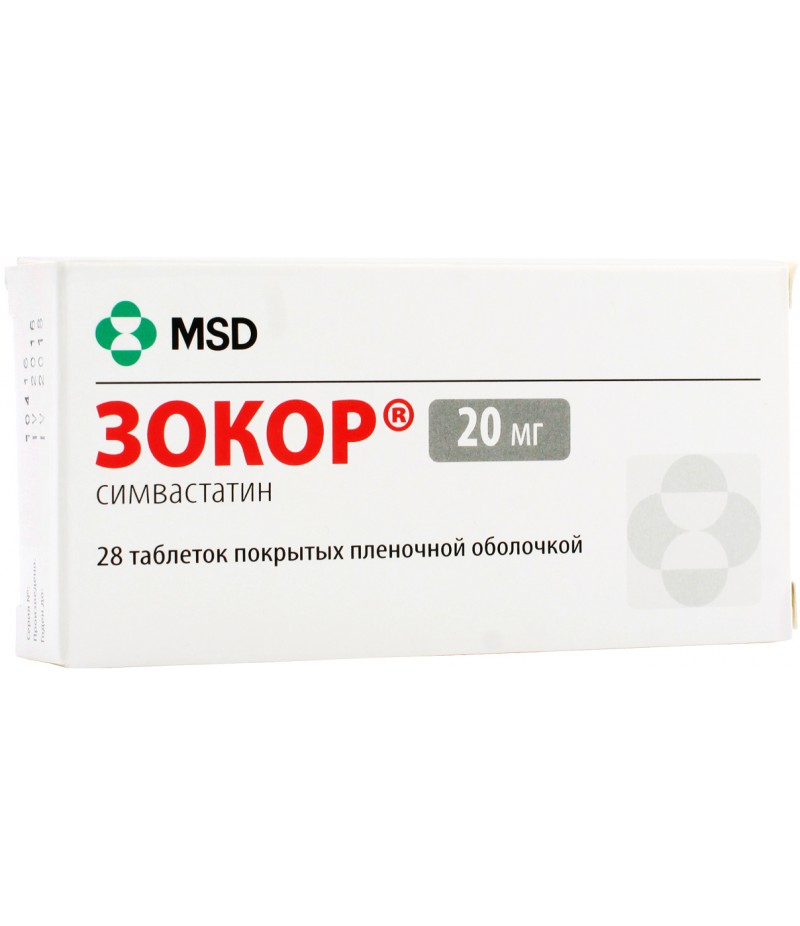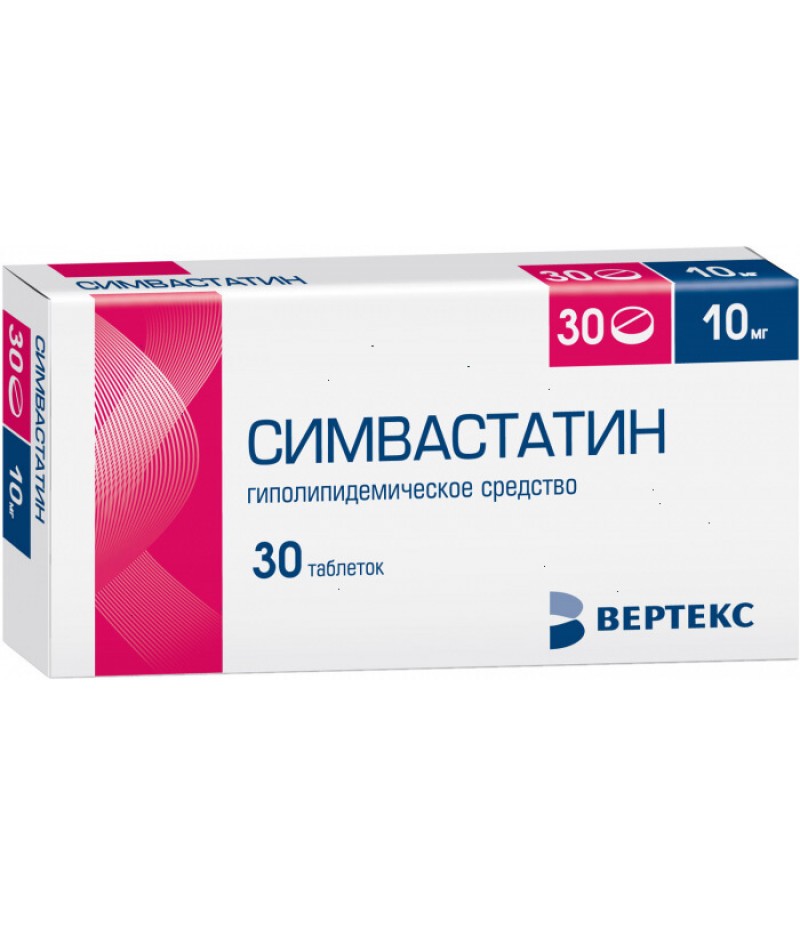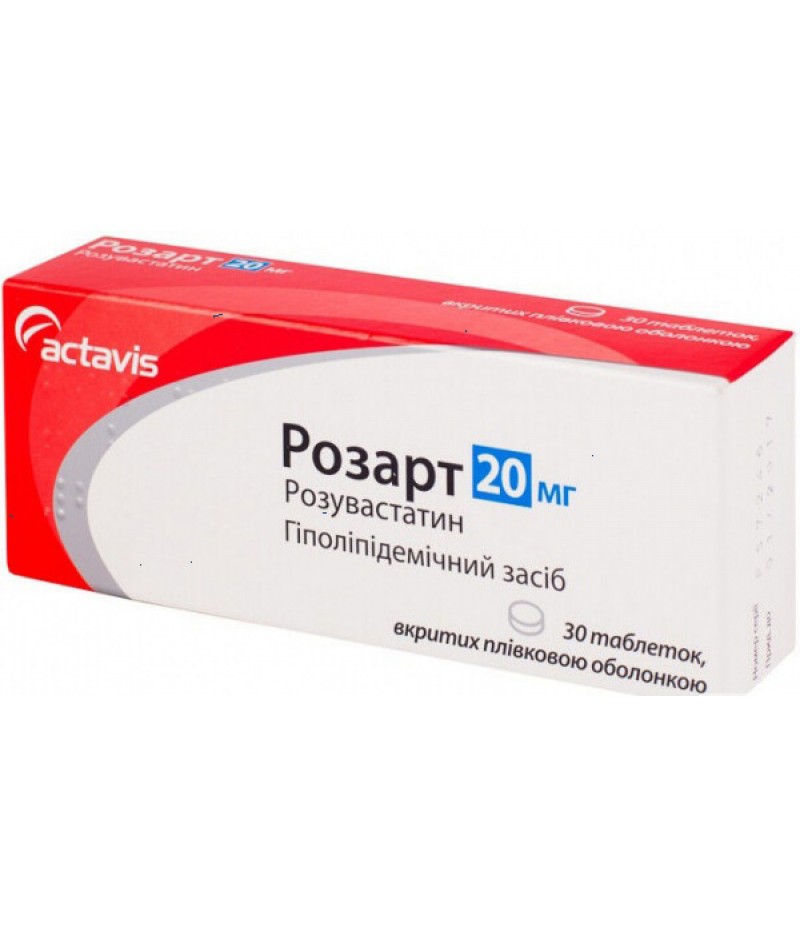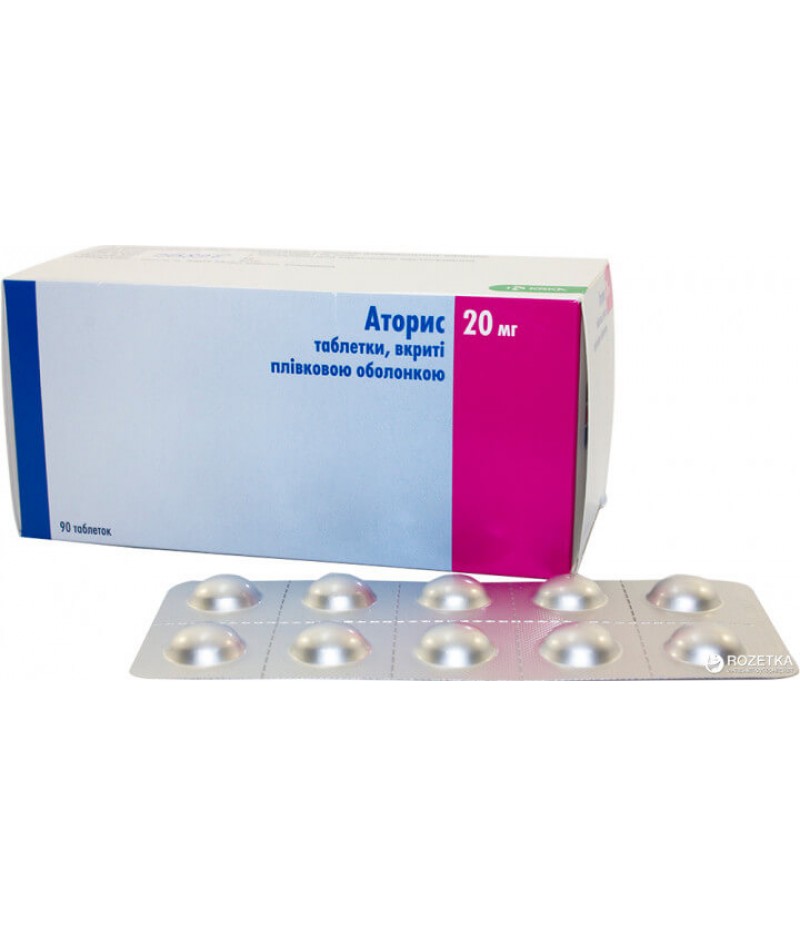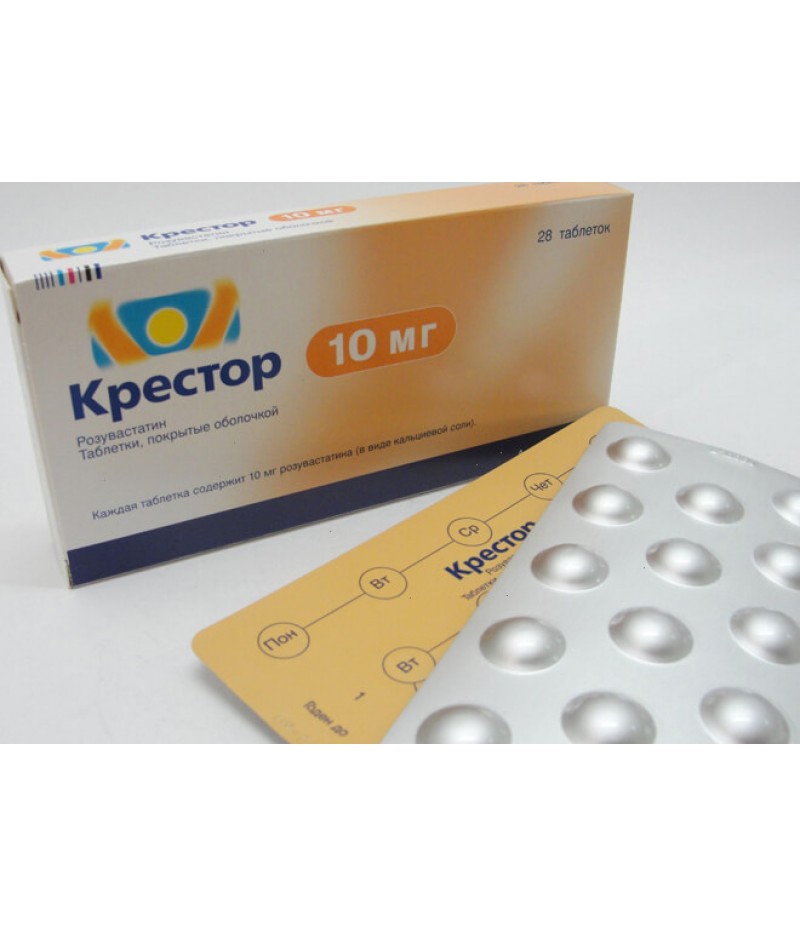Zocor forte tabs 40mg #14
- $23.92
- 3 or more $21.50
- Availability:Out Of Stock
Instruction for Zocor forteReed more and buy Zocor forte on this page onlineClinical and pharmacological groupLipid-lowering drugForm of release, composition and packagingThe tablets covered with a cover of pink color, oval, with ..
Tags: tabs
Instruction for Zocor forte
Reed more and buy Zocor forte on this page online
Clinical and pharmacological group
Lipid-lowering drug
Form of release, composition and packaging
The tablets covered with a cover of pink color, oval, with engraving "MSD 749" on one side and smooth - on another.
simvastatin 40 mg
Excipients: butyl hydroxy anisole, ascorbic acid, lactose monohydrate (lactose aqueous), citric acid, microcrystalline cellulose, pregelatinized cellulose, magnesium stearate, hypromellose, hydroxypropylcellulose, titanium dioxide, talc, iron oxide red.
14 pcs. - blisters (1) - packs of cardboard.
14 pcs. - blisters (2) - packs of cardboard.
pharmachologic effect
Zocor Forte (simvastatin) is a lipid-lowering drug obtained synthetically from the fermentation product of Aspergillus terreus.
After oral administration, simvastatin, which is an inactive lactone, undergoes hydrolysis with the formation of the corresponding beta-hydroxy-acid derivative, which is the main metabolite and has a high inhibitory activity against HMG-CoA- (3-hydroxy-3-methylglutaryl coenzyme A) reductase, an enzyme that catalyzes the initial and most significant stage of cholesterol biosynthesis. Clinical studies have shown Zocor's effectiveness in lowering total cholesterol levels in blood plasma, low-density lipoprotein (LDL), triglycerides (TG) and very low density lipoproteins (VLDL), as well as increasing the level of high-density lipoprotein (HDL) in patients with heterozygous family and non-family hypercholesterolemia, as well as mixed hyperlipidemia in those cases where elevated cholesterol is a risk factor and the appointment of one diet is not enough. A noticeable therapeutic effect is observed within 2 weeks of taking the drug, the maximum - 4-6 weeks after the start of treatment. The effect persists with the continuation of therapy. If you stop taking simvastatin, the total cholesterol content returns to the baseline level determined before the start of treatment.
The active metabolite of simvastatin is a specific inhibitor of HMG-CoA reductase, an enzyme that catalyzes the formation of mevalonate from HMG-CoA. Since the conversion of HMG-CoA to mevalonate is an early stage in the biosynthesis of cholesterol, it is believed that the use of Zocor should not cause the accumulation of potentially toxic sterols in the body. In addition, HMG-CoA is readily metabolized to acetyl-CoA, which is involved in many biosynthetic processes in the body.
In the Scandinavian Simvastatin Effects on Survival, the effect of Zocor therapy on overall mortality (median time of participation of patients of 5.4 years) was evaluated in 4444 patients with IHD and baseline total cholesterol of 212-309 mg / dL (5.5-8.0 mmol / L). In this multicenter, randomized, double-blind, placebo-controlled study, Zocor reduced the risk of overall mortality by 30%, mortality from coronary heart disease by 42%, and the incidence of nonfatal, confirmed myocardial infarction by 37%. Zocor also reduced the risk of the need for coronary blood flow restoration (aorto-coronary bypass or percutaneous transluminal coronary angioplasty) by 37%. In patients with diabetes, the risk of major coronary events decreased by 55%. Moreover, Zocor significantly (by 28%) reduced the risk of fatal and nonfatal cerebrovascular accidents (strokes and transient cerebral circulation disorders).
In a 5-year, multicenter, randomized, double-blind, placebo-controlled HeartProtectionStudy-HPS study, the effectiveness of Zocor therapy was demonstrated in 20536 patients with or without hyperlipidemia who are at high risk of developing coronary artery disease due to diabetes, stroke and other vascular diseases. Before the start of therapy, in 33% of patients, the LDL level was below 116 mg / dl, 25% had an LDL level of 116 mg / dL to 135 mg / dL, and 42% had an LDL level higher than 135 mg / dl. In this study, Zocor at a dose of 40 mg / day compared with placebo reduced total mortality by 13%, the risk of death associated with coronary artery disease by 18%, the risk of major coronary events (nonfatal myocardial infarction or death associated with coronary artery disease) by 27 %, the risk of the need for surgical interventions to restore coronary blood flow (aorto-coronary bypass and percutaneous transluminal angioplasty) by 30%, the risk of the need for restoring peripheral blood flow and other types of non-coronary red cell the risk of a stroke by 25%. The rate of hospitalization for heart failure decreased by 17%. The risk of developing major coronary and vascular complications decreased by 25% in patients with or without IHD, including patients with diabetes mellitus, peripheral vascular disease and cerebrovascular pathology. In patients with diabetes, Zocor reduced the risk of vascular complications by 21%, including operations to restore peripheral blood flow, amputation of the lower limbs and the occurrence of trophic ulcers.
In another multicenter, placebo-controlled study of 404 patients, Zocor, according to coronary angiography, slowed the progression of coronary atherosclerosis and the emergence of both new areas of atherosclerosis and new total occlusions, while patients receiving standard therapy experienced a steady progression of coronary artery atherosclerosis.
Analysis of subgroups of 2 studies in which 147 patients with hypercholesterolemia (Fredrickson type IV hyperlipidemia included) showed that in the Zocor group taken at a dose of 20-80 mg / day, the triglyceride level decreased by 21-39% (in the group placebo - by 11-13%), LDL cholesterol by 23-35% (in the group of spas - by 1-3%), all types of lipoproteins, except for HDL, by 26-43% (in the placebo group - by 1-3% ), and the level of HDL cholesterol increased by 9-14% (in the placebo group - by 3%).
In 7 patients with dysbetalipoproteinemia (type III hyperlipidemia according to Fredrickson classification), Zocor in a dose of 80 mg / day reduced LDL cholesterol including 51% of cholesterol in the placebo group (8% in the placebo group), and the VLDL and cholesterol level by 60 % (in the placebo group - 4%).
Pharmacokinetics
The main active metabolites of simvastatin in blood plasma are beta-hydroxyacid and its 6-hydroxy, 6-hydroxymethyl and 6-exomethylene derivatives. Cmax of simvastatin metabolites in blood plasma is achieved through 1.3-2.4 h after a single dose. There is evidence of the achievement of Cmax simvastatin and its metabolites in the period up to 4 hours and its slow decline in 12 hours by about 10%. When taking simvastatin in the recommended therapeutic doses (5-80 mg / day), the linear profile of the AUC profile of active metabolites in the total blood flow is preserved. Linear dependence persists with increasing dose to 120 mg.
Simvastatin is an inactive lactone, which is easily hydrolyzed to a β-hydroxy acid, L-654, 969, a potent inhibitor of HMG-CoA reductase. The plasma of the blood contains the metabolite L-654, 969 and 4 more active metabolites. Inhibition of HMG-CoA reductase is the basis of all pharmacokinetic studies of B-hydroxy acid metabolites (active inhibitors). Both those and others are determined in blood plasma when prescribing simvastatin.
Approximately 85% of the dose of simvastatin taken internally is absorbed.
After ingestion, higher concentrations of simvastatin are determined in the liver than in other tissues.
The content of the active form of simvastatin L-654, 969 in the systemic circulation is less than 5% of the inward dose, 95% of this quantity is in the protein-bound state.
The result of active metabolism of simvastatin in the liver (more than 60% in men) is its lower content in the total blood flow.
The possibility of the penetration of simvastatin through the blood-brain barrier and the hematoplacental barrier has not been studied.
At the first passage through the hepatic blood flow, simvastatin is metabolized with subsequent excretion of the drug and its metabolites with bile. In the study, 100 mg of the drug was administered in capsules (5 x 20 mg), labeled simvastatin C14 was accumulated in blood, urine and feces. About 60% of the labeled drug was found in the stool and only about 13% in the urine.
The variation coefficient of AUC in the total blood flow does not depend on the dose of simvastatin. In this study, patients took inward simvastatin tablets at doses of 5, 10, 20, 60, 90 and 120 mg. Eating (within the standard hypocholesterine diet) immediately after taking simvastatin does not interfere with the pharmacokinetic profile of the drug. Pharmacokinetic parameters when taking a single dose and prolonged treatment with simvastatin show that simvastatin does not accumulate in tissues during long-term treatment. Cmax inhibitors in blood plasma are achieved within 1.3-2.4 hours after taking the drug.
In a study of patients with severe renal failure (crutinin clearance less than 30 ml / min) after taking a single dose of the drug, concentrations of HMG-CoA reductase inhibitors in blood plasma were approximately 2 times higher than in healthy volunteers.
Indications
Ischemic heart disease (CHD) or high-risk development of coronary heart disease.
In patients with a high risk of developing coronary artery disease (with or without hyperlipidemia), for example, in patients with diabetes mellitus, in patients with a history of stroke or other cerebrovascular disease, in patients with peripheral vascular disease, or in patients with ischemic heart disease or a predisposition to Coronary heart disease is indicated for:
- reducing the risk of overall mortality due to a reduction in mortality due to coronary artery disease;
- reducing the risk of serious vascular and coronary complications;
- non-fatal myocardial infarction;
- coronary death;
- stroke;
- revascularization operations;
- reducing the risk of need for coronary blood flow restoration (such as aorto-coronary bypass and percutaneous transluminal coronary angioplasty);
- reducing the risk of the need for surgical intervention to restore peripheral blood flow and other types of non-coronary revascularization;
- reducing the risk of hospitalization due to attacks of angina pectoris.
Hypercholesterolemia
If the use of diet and other non-medicamentous treatments is not enough, Zocor Forte is prescribed in conjunction with a diet for:
- Decreased elevated levels of total cholesterol, LDL cholesterol, triglycerides, apolipoprotein B (apo-B);
- increase in HDL cholesterol in patients with primary hypercholesterolemia, including heterozygous familial hypercholesterolemia (Fredrickson type II hyperlipidemia), or mixed hypercholesterolemia (IIb-type hyperlipidemia according to Fredrickson classification);
- Decreased LDL cholesterol / HDL cholesterol and total cholesterol / HDL cholesterol;
- hypertriglyceridemia (type IV hyperlipidemia according to Fredrickson classification);
- supplement to the diet and other ways of treating patients with homozygous familial hypercholesterolemia to reduce the elevated level of total cholesterol, LDL cholesterol and apolipoprotein B;
- primary dysbetalapoproteinemia (type III hyperlipidemia according to Fredrickson classification);
In patients with diabetes - Zocor Forte reduces the risk of peripheral vascular complications (carrying out revascularization, amputation of the lower extremities, the emergence of trophic ulcers).
In patients with ischemic heart disease and hypercholesterolemia, Zocor Forte slows the development of coronary atherosclerosis, including a reduction in the incidence of new complications.
Contraindications
- liver disease in the active phase or persistent increase in transaminases in the blood plasma of an unknown etiology;
- Pregnancy;
- lactation period;
- Hypersensitivity to any component of the drug.
Carefully:
Simvastatin, like other inhibitors of HMG-CoA reductase, can sometimes cause myopathy. Many of the patients who underwent rhabdomyolysis during simvastatin therapy had a complicated anamnesis, incl. suffered from kidney failure, usually as a result of diabetes mellitus. Such patients require more careful observation. Therapy with simvastatin should be temporarily discontinued in such patients a few days before the performance of large surgical interventions, as well as in the postoperative period.
Patients with a stable elevated serum transaminase level, which exceeds the upper limit by 3 times, should be withdrawn.
In severe renal failure (creatinine clearance less than 30 ml / min), it should be carefully weighed the feasibility of prescribing the drug in doses exceeding 10 mg / day. If such dosages are considered necessary, they should be administered with caution.
Alcohol abuse before treatment.
Dosage
Before the start of treatment with Zocor Fort, the patient should be prescribed a standard hypocholesterol diet, which should be observed throughout the course of treatment.
Recommended doses of Zocor Forte - from 5 to 80 mg, should be taken 1 time / day in the evening. When choosing a dose of Zocor Forte, its change should be made at intervals of not less than 4 weeks, until the maximum daily dose of 80 mg 1 time / day in the evening hours.
Patients with ischemic heart disease (CHD) or a high risk of coronary heart disease
The standard initial dose of Zocor for patients with a high risk of developing coronary artery disease in combination with or without hyperlipidemia (in the presence of diabetes, stroke or other cerebrovascular anemia, peripheral vascular disease, ischemic heart disease) is 40 mg 1 time per day in the evening time. Drug therapy can be prescribed simultaneously with diet and exercise therapy.
Patients with hypercholesterolemia who do not have the above risk factors
The standard initial dose of Zocor Forte is 20 mg 1 time / day in the evening. For patients who need a significant (more than 45%) reduction in LDL cholesterol, the initial dose may be 40 mg 1 time / day in the evening. Patients with mild or moderate hypercholesterolemia Zocor can be administered at a dose of 10 mg 1 time / day. If necessary, the choice of doses should be carried out in accordance with the above scheme
Patients with homozygous familial hypercholesterolemia
The recommended dose of Zocor Forte is 40 mg 1 time / day in the evening, or 80 mg / day in 3 divided doses: 20 mg in the morning, 20 mg in the afternoon and 40 mg in the evening. In such patients, Zocor Forte is used in combination with other treatments that lower cholesterol (eg, LDL apheresis) or without them, if they are not available.
Concomitant therapy
Zocor Forte can be administered both in monotherapy and in combination with bile acid sequestrants.
In patients taking cyclosporine, danazol, gemfibrozil or other fibrates (other than fenofibrate), or niacin in lipid lowering doses (> 1 g / day) in combination with simvastatin, the maximum recommended dose of Zocor Forte is 10 mg / day. For patients taking amiodarone or verapamil simultaneously with Zocor Forte, the daily dose of Zocor Forte should not exceed 20 mg
Renal insufficiency
Since Zocor Forte is excreted by the kidneys in small amounts, there is no need to change the doses in patients with moderate renal insufficiency. In patients with severe renal insufficiency (creatinine clearance less than 30 ml / min), the expediency of prescribing the drug at doses exceeding 10 mg / day should be carefully weighed. If such dosages are considered necessary, the drug should be administered with caution.
Side effects
Zocor Forte is generally well tolerated, and most side effects are mild and transient. Less than 2% of patients in clinical trials discontinued treatment due to development, the side effects of Zocor Forte's.
Prior to the widespread use of the drug, adverse effects occurring at a frequency of 1% or more, which were assessed by researchers as possible, probably or definitely associated with taking the drug, were abdominal pain, constipation and flatulence. Other side effects that occurred in 0.5-0.9% of patients were asthenia and headache.
There are rare reports of the development of myopathy.
In the Heart Protection Study (HPS), the use of Zocor at a dose of 40 mg / s for 5 years confirmed the comparability of the drug safety profile in patients receiving Zocor (n = 10269) compared with placebo (n = 10267). The failure to treat as a result of adverse events was 4.8% in the Zocor group and 5.1% in the placebo group.
In the Scandinavian study, safety and tolerability profiles were comparable in patients taking Zocor (n = 2221) at a dose of 20-40 mg and patients in the placebo group (n = 2223), when they were observed for more than 5.4 years.
There are also reports of the development of the following side effects:
On the part of the digestive system: dyspepsia (nausea, vomiting, diarrhea), pancreatitis; rarely - hepatitis and jaundice.
From the side of the central nervous system and sensory organs: dizziness, peripheral neuropathy, paresthesia.
From the musculoskeletal system: myalgia, muscle cramps; rarely rhabdomyolysis.
Allergic and immunopathological reactions: angioedema, lupus-like syndrome, rheumatic polymyalgia, vasculitis, thrombocytopenia, eosinophilia, increased ESR, arthritis, arthralgia, urticaria, photosensitivity, fever, skin hyperemia, dyspnea, general malaise.
Dermatological reactions: skin rash, itching, alopecia, dermatomyositis.
Other: anemia, general malaise.
Laboratory indicators: there are rare reports of the development of a pronounced and persistent increase in the level of transaminases. An increase in the activity of alkaline phosphatase and gamma-glutamyl transpeptidase was also reported. Deviations of liver function indicators are usually mild and transient. There are cases of increased activity of creatine phosphokinase.
Overdose
Several cases of overdose were reported, the maximum dose taken was 3.6 g. None of the patients had an overdose effect.
For the treatment of overdose, general measures are used, including supportive and symptomatic therapy.
Drug Interactions
Simvastatin is metabolized by CYP3A4, however, it has no inhibitory activity in this ratio of coenzyme. Therefore, the effects of simvastatin on the concentration in the blood plasma of drugs metabolized by CYP3A4 are not expected.
Powerful inhibitors of CYP3A4 increase the risk of myopathy by reducing the rate of excretion of simvastatin. Such agents include itraconazole, ketoconazole, erythromycin, clarithromycin, telithromycin, HIV protease inhibitors, nefazodone.
The risk of myopathy / rhabdomyolysis increases with the joint administration of cyclosporine or danazol with high doses of simvastatin.
The risk of myopathy increases with the co-administration of other lipid-lowering drugs that are not strong inhibitors of CYP3A4, but are capable of causing myopathy under monotherapy. Such drugs are gemfibrozil and other fibrates (except fenofibrate, when combined with simvastatin, the risk of myopathy does not exceed that of monotherapy with each drug alone), and niacin (nicotinic acid) at a dose> 1 g / day.
The risk of developing myopathy increases with the simultaneous administration of amiodarone or verapamil with high doses of simvastatin.
The risk of myopathy is slightly increased in patients receiving diltiazem simultaneously with simvastatin at a dose of 80 mg.
Other drug interactions
Simvastatin at a dose of 20-40 mg / day moderately potentiates the effect of coumarin anticoagulants: The International Normalized Ratio (MHO) increases in healthy volunteers from 1.7 to 1.8, and in patients with hypercholesterolemia from 2.6 to 3.4. In patients taking coumarin anticoagulants, prothrombin time or MHO should be determined before the start of simvastatin therapy, and also often enough during the initial treatment period. Once a stable level of prothrombin time or MHO is reached, further monitoring should be performed at intervals recommended for patients receiving anticoagulant therapy. When changing the dosage or stopping the intake of simvastatin, it is also necessary to monitor prothrombin time or MHO as described above.
Therapy with simvastatin does not cause changes in prothrombin time and the risk of bleeding in patients not taking anticoagulants.
Other types of interaction
Grapefruit juice contains one or more components that inhibit CYP3A4 and can increase the plasma concentration of drugs metabolized by CYP3A4. The increase in the activity of HMG-CoA reductase inhibitors after consuming 250 ml of juice per day is the maximum, is approximately 13% and has no clinical significance. However, consumption of a large amount of juice (more than 1 l / day) with the use of simvastatin significantly increases the level of inhibitory activity against HMG-CoA reductase in blood plasma. In this regard, you must avoid the consumption of grapefruit juice in large quantities.
special instructions
Simvastatin, like other inhibitors of HMG-CoA reductase, can cause myopathy, which manifests itself in the form of muscle pain, soreness or general weakness, and is accompanied by an increase in activity of creatine phosphokinase more than 10 times higher than the upper limit of the norm. Myopathy can manifest itself in the form of rhabdomyolysis, sometimes accompanied by acute renal failure due to myoglobinuria. The risk of myopathy is increased by increasing the inhibitory activity against HMG-CoA reductase in blood plasma.
The risk of developing myopathy / rhabdomyolysis with simvastatin therapy increases with the concomitant use of the following drugs:
- potent inhibitors of CYP3A4: itraconazole, ketoconazole, erythromycin, clarithromycin, telithromycin, HIV protease inhibitors and nefazodone, especially in combination with high doses of simvastatin;
- gemfibrozil and other fibrates (except fenofibrate), as well as lipid-lowering doses (> 1 g / day) of niacin (nicotinic acid), especially in combination with high doses of simvastatin. There is no evidence that in the appointment of simvastatin concomitantly with fenofibrate, the risk of developing myopathy exceeds the total risk created by taking each of these drugs;
- Cyclosporine or danazol, especially in combination with high doses of simvastatin;
- amiodarone or verapamil in combination with high doses of simvastatin. Clinical studies reported the development of myopathy in 6% of patients who received simvastatin at a dose of 80 mg concomitantly with amiodarone;
- in patients receiving diltiazem simultaneously with simvastatin at a dose of 80 mg / day, the risk of developing myopathy increases and is approximately 1%. The risk of myopathy in patients receiving diltiazem simultaneously with simvastatin at a dose of 40 mg / day was approximately equal to that of simvastatin 40 mg / day without concomitant diltiazem.
Dependence of the risk of myopathy / rhabdomyolysis on the dose of the drug. In clinical trials in which patients did not take concomitant therapy, the incidence of myopathy / rhabdomyolysis was approximately 0.03% in patients receiving simvastatin 20 mg / day, 0.08% in patients receiving simvastatin 40 mg / day and 0.4% y patients who received simvastatin at a dose of 80 mg / day.
Measures to reduce the risk of myopathy / rhabdomyolysis
Simvastatin should be avoided concomitantly with the following drugs: itraconazole, ketoconazole, erythromycin, clarithromycin, telithromycin, HIV protease inhibitors and nefazodone. If therapy with the listed drugs can not be canceled, simvastatin therapy should be stopped for the time of taking these medications. The concomitant administration of any of the listed inhibitors of CYP3A4 should be excluded if the benefits of combination therapy do not exceed the possible risk.
The dose of simvastatin should not exceed 10 mg / day for patients who take cyclosporine, danazol or gemfibrozil, other fibrates (other than fenofibrate), or lipid-lowering doses (> 1 g / day) of niacin (nicotinic acid). Simultaneous prescribing of simvastatin with these drugs should be avoided if the benefits of influencing lipid levels do not exceed the risk of prescribing drug combinations. The addition of fibrates or niacin to simvastatin therapy generally provides a small additional reduction in the concentration of LDL, but an additional decrease in TG levels and an increase in HDL-C can also be achieved.
Dosages of simvastatin for patients receiving amiodarone or verapamil should not exceed 20 mg / day. The use of simvastatin in doses above 20 mg / day in conjunction with amiodarone or verapamil is not recommended unless the benefits of using this combination exceed the potential risk of myopathy.
All patients starting therapy with simvastatin, as well as patients who need to increase the dose of the drug, should be warned about the possibility of myopathy and the need to immediately seek medical attention in the event of any unexplained pain, tenderness in the muscles or muscle weakness. Therapy with simvastatin should be discontinued immediately if myopathy is diagnosed or suspected. The presence of the above symptoms and / or more than 10-fold compared with the upper limit of the norm, an increase in the level of creatine phosphokinase indicates the presence of myopathy. In most cases, after an immediate discontinuation of simvastatin, the symptoms of myopathy are resolved, and the concentration of creatine phosphokinase is reduced. At the beginning of simvastatin therapy or with increasing doses of the drug, it is advisable to periodically determine the level of creatine phosphokinase, but there is no reliable evidence that such monitoring can prevent the development of myopathy.
Many patients who developed rhabdomyolysis during simvastatin therapy had a complicated anamnesis, incl. suffered from kidney failure, usually as a result of diabetes mellitus. Such patients require more careful observation. Therapy with simvastatin should be temporarily discontinued in patients a few days before the performance of large surgical interventions, as well as in the postoperative period.
In patients taking coumarin anticoagulants, the prothrombin time should be monitored before the start of simvastatin therapy and during the initial treatment period to exclude significant changes in this indicator. Once a stable level of prothrombin time is reached, its further determination should be carried out at intervals recommended for the control of patients receiving anticoagulant therapy. The same procedure should be repeated with a change in dosage or discontinuation of simvastatin. In patients who did not take anticoagulants, therapy with simvastatin was not associated with the occurrence of bleeding or changes in prothrombin time.
Effects on the liver
In clinical studies, in some adult patients receiving simvastatin, there was a steady increase in the level of hepatic enzymes (more than 3 times the upper limit of the norm). When the drug is withdrawn, the activity of transaminases usually returns gradually to the baseline level. An increase in the level of transaminases was not accompanied by jaundice or other clinical symptoms. These reactions are not associated with hypersensitivity. Some of the patients had a deviation of liver function before the start of simvastatin therapy and / or consumed excessive amounts of alcohol.
In the 4S study, the number of patients with more than a single increase in the level of serum transaminases (more than 3 times the upper limit of the norm) did not differ in the simvastatin and placebo groups. An increase in serum transaminase levels caused the discontinuation of treatment in 8 patients (from 2221) in the simvastatin group and in 5 patients (out of 2223) in the placebo group. All patients in this study received an initial dose of simvastatin 20 mg / day, 37% of the dose was increased to 40 mg / day.
In two controlled clinical trials, 1105 patients took part, a persistent increase in the level of transaminases associated with the use of the drug was observed in 0.7% and 1.8% of cases with 40 mg and 80 mg of the drug, respectively.
In the HPS study, in which 20536 patients were included, an increase in the serum transaminase level (more than 3 times the upper limit of the norm) with Zocor 40 mg / d was 0.21% (n = 21) and 0.09% (n = 9 ) in the simvastatin and placebo groups, respectively.
Before the beginning of treatment, and then - in accordance with clinical indications, all patients are recommended to conduct functional liver tests. Patients who plan to increase the dose of simvastatin up to 80 mg / day, functional liver tests should be performed before the start of titration, then 3 months after reaching the dose of 80 mg / day, then periodically repeat (for example, 1 time / half a year) during the first 1st year of treatment. Particular attention should be paid to patients who have elevated serum transaminase levels. These patients should be monitored at the beginning of treatment and more often in the future. In those cases, when the level of transaminases increases, especially with a stable excess of 3 times the upper limit of the norm, the drug should be canceled.
In the treatment with simvastatin, as with other lipid-lowering agents, there was a moderate increase (less than 3 times the upper limit of the norm) in the activity of serum transaminases. These changes appeared soon after the start of treatment, often were transient, were not accompanied by any symptoms and did not require the abolition of therapy.
Ophthalmological examination
Data from long-term clinical trials do not contain information on the adverse effects of simvastatin on the lens of the human eye.
Elderly age
In patients over the age of 65 years, the effectiveness of Zocor, assessed by the level of total cholesterol and LDL cholesterol, is the same as in the population as a whole, there was no significant increase in the incidence of clinical or laboratory side effects.
Pregnancy and lactemia
Zocor Forte is contraindicated in pregnancy. Since safety for pregnant women is not proven and there is no evidence that treatment with the drug during pregnancy brings obvious benefits, taking the drug should be stopped immediately after pregnancy. Simvastatin should be given to women of childbearing age only in those cases when the probability of pregnancy is very small. If during pregnancy Zocor is pregnant, the drug should be canceled, and the woman herself is warned about the possible danger to the fetus.
Data on the isolation of simvastatin or its metabolites with breast milk are absent. If it is necessary to appoint Zocor to a woman during lactation, it should be borne in mind that many drugs are excreted in breast milk and there is a threat of developing serious adverse reactions, so breast-feeding is not recommended.
Application in childhood
Data on the efficacy and safety of use in children is not enough, so use in children is not recommended.
In case of violations of kidney function
Since Zocor Forte is excreted by the kidneys in small amounts, there is no need to change the doses in patients with moderate renal insufficiency. In patients with severe renal insufficiency (creatinine clearance less than 30 ml / min), the expediency of prescribing the drug at doses exceeding 10 mg / day should be carefully weighed. If such dosages are considered necessary, the drug should be administered with caution.
In severe renal failure (creatinine clearance less than 30 ml / min), it should be carefully weighed the feasibility of prescribing the drug in doses exceeding 10 mg / day. If such dosages are considered necessary, they should be administered with caution.
With violations of liver function
Contraindicated:
- liver disease in the active phase or persistent increase in transaminases in the blood plasma of an unknown etiology.
Carefully:
Patients with a stable elevated serum transaminase level, which exceeds the upper limit by 3 times, should be withdrawn.
Application in old age
In patients over the age of 65 years, the effectiveness of Zocor, assessed by the level of total cholesterol and LDL cholesterol, is the same as in the population as a whole, there was no significant increase in the incidence of clinical or laboratory side effects.
Terms and conditions of storage
Keep out of the reach of children at a temperature not exceeding 30 ° C. Shelf life - 2 years.

